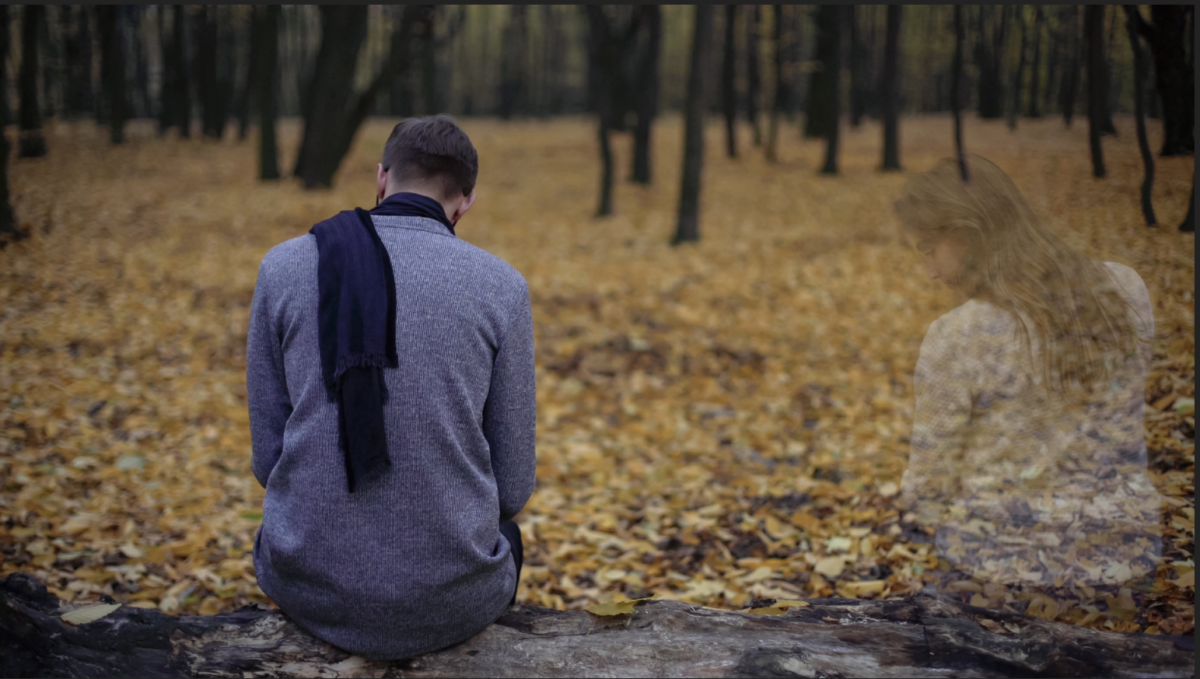
Cold Case Investigations: Hope, Heartbreak & Bringing Them Home
For first responders and investigators, some of the most compelling cases are not the ones that got away, but the ones that disappeared without a trace. They are the people missing for decades, the bodies that were never found, the searches that began with everyone knowing it would be a recovery mission, not a rescue. Cold Case investigators are a tiny, dedicated band. The living matter to them, but so do the dead, because every case was once someone who was alive and loved, and closure matters to their families.
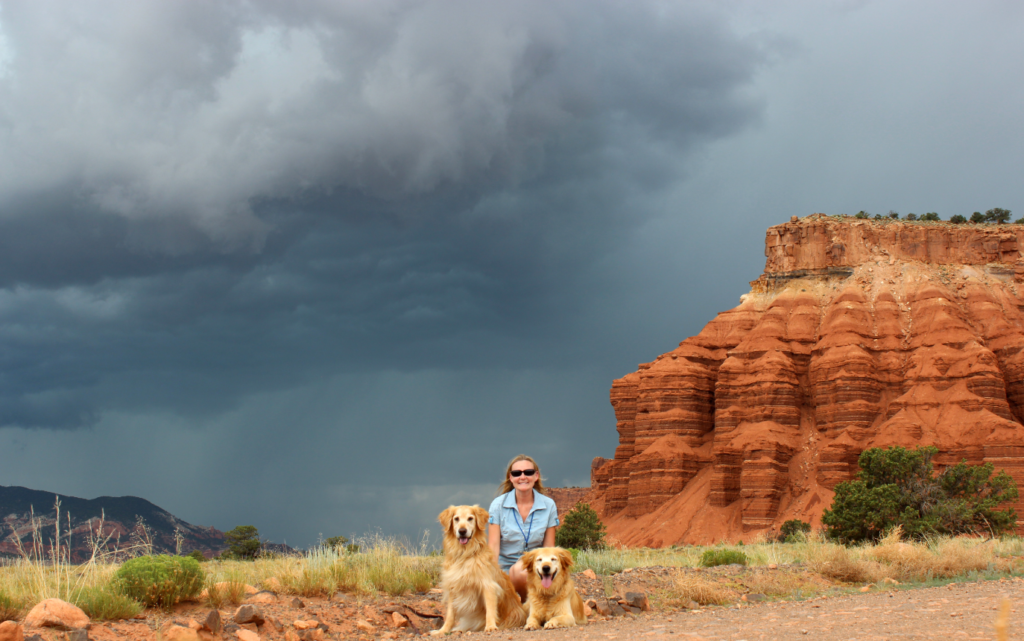
By Kacy Robinson
I’m often asked, “Why Search and Recovery work?” The majority of those involved with Search and Rescue (SAR), especially canine handlers, find SAR work very fulfilling. They continue the work knowing they are making a difference. They are providing a service to the community and working with their four-legged partners in a way no other work provides. Those who search want to bring a loved one back home to their family and are always hoping the person will be found alive and well.
Search & Recovery work is different. With SAR, you have hope of life; but those of us focused on Recovery understand one basic fact while going into every mission: This victim will not be found alive. Yet, our motivations for continuing our work are similar to those who do SAR, bringing a loved one “home” — often after decades.
As someone who focuses exclusively on Search & Recovery, I feel a deep-rooted need to not provide a semblance of closure, but also solve cases. As a canine handler for a cold case recovery team, my entire focus is on recovering missing persons in cases where law enforcement resources have been exhausted.
Our driving force is the fact that families never lose hope. Families want action, and most importantly, they want someone to care. Every single day, they live in limbo, not knowing what happened to a loved one, hoping and praying for miracles. The focus of Fide Canem Cold Case, Inc. is providing that hope to families, and my goal as a SAR Recovery handler is to fulfill that mission.
Growing up in a law enforcement family, I watched my family assist people in their greatest time of need. I also watched cases grow cold. I lived in a small community where everyone knew everyone, and cold cases touched the lives of all of us. There are always new cases to solve, law enforcement resources are invariably limited and the more immediate, pressing matters receive the most attention. Cold cases, unfortunately, almost always get relegated to a shelf somewhere.
I watched my grandfather deploy with Jeep Patrol, setting out as a hero to save a lost child or a hunter who had not returned home at the appointed time. I watched my father, who was a lieutenant with the local sheriff’s office, spend days searching for a missing infant swept away in a flash flood. I watched my uncle, a chief of police, deploy all his resources into remote locations — only to call them back when the individual was not found, and new cases took precedence.
Back To The Beginning With Bundy
In 1990, I assisted my father, Roy Robinson, then with the Carbon County Sheriff’s Office, on what would become my first search, one that engendered a lifelong passion for cold case work. In January 1989, mere days before serial killer Ted Bundy was executed in a Florida Prison, Salt Lake County Sheriff’s Detective Dennis Couch spent 90 minutes with him, to ask about a number of his Utah victims. Nancy Wilcox, 16, who vanished on Oct. 3, 1974; Melissa Smith, 17, abducted and later found murdered on Oct. 27, 1974; Laura Ann Aime, 17, kidnapped on Oct. 31, 1974, found murdered on Nov. 27, 1974; Debra Kent, 17, who went missing on Nov. 8, 1974; Nancy Baird, 23, who disappeared on Independence Day, 1975, Debbie Smith, 17, whose body was found on April 1, 1976, and 14-year-old Susan Curtis, who was never seen or heard of after June 27, 1975.
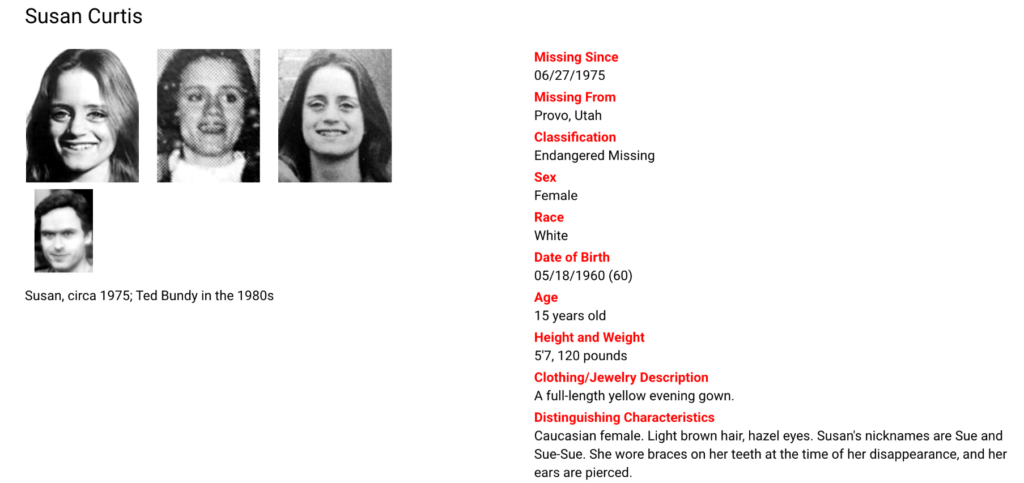
Photo Courtesy: The amazing Charley Project
The year after Ted Bundy’s confession, my father and I searched for one of his victims near my hometown, this was where Bundy had stated he buried Sue Curtis. At the time of her disappearance, Sue had been attending a youth conference at Brigham Young University in Provo. According to reports, she had ridden her cycle 50 miles to attend the two-day conference. She was never seen after Day One, when she attended a banquet with some friends and told them she’d be back after brushing her teeth. She had new braces and wanted to clean them. It was less than half a mile from the banquet hall to the dorm they were staying at. Authorities believe Sue never got to the dormitory; her toothbrush was dry.
I began my search journey young but was not much younger than Sue was when she went missing when I began searching for her remains. Even though I had watched my loved ones on these searches for most of my life, it wasn’t until that moment that I realized how important SAR/Recovery was to the families of the missing and to the community at large.
Sue’s body was never found. It’s been more than 30 years, but I keep meaning to go back to where Bundy told us to look and look some more. Those memories stayed with me, always in the back of my mind, as I continued my education, completing my MS in Forensic Science at the Henry Lee College of Forensic Science. I wanted to make a difference; live up to a family legacy of service and help other families.
Soon after graduating with my masters, I returned to Utah and began researching opportunities. I joined the oldest and largest SAR team in the state of Utah as a canine handler and immediately found my calling, even as I worked on honing my skills and networking with other searchers and law enforcement.
Out In The Cold: Cases Waiting For Someone To Care
Twelve years after I began my career as a canine handler, two other canine handlers and I began discussing what we believed was a gap in the services we were providing. We were deploying on many searches looking for the lost, the suicidal, the missing, but we weren’t spending any time or resources on cold cases, even though families had come to us asking for help. With finite resources and always short on time, everyone simply prioritized emergent cases over those which had gone cold.
We saw this as an opportunity to make a difference on our own time and dime. We began strategizing on how we could manage a cold case caseload, and those meetings led to what is now Fide Canem Cold Case, Inc. We are the first and only cold case canine recovery team in the state of Utah and one of a mere handful in the nation.
Since the inception of Fide Canem Cold Case, Inc. in 2017, both interest in cold cases and the desire amongst law enforcement to solve them has increased manifold. We have gone on to partner with the Cold Case Foundation and the American Investigative Society of Cold Cases. These partnerships, along with law enforcement collaborations, have allowed us to consult and deploy on multiple cases world-wide.
No two cold cases are ever the same, whether for a missing child in the wilderness, an older adult suffering a medical issue in an urban setting, a suicidal individual, or the victim of a homicide. Each search is as different as the missing person is and requires in-depth case research prior to deployment.
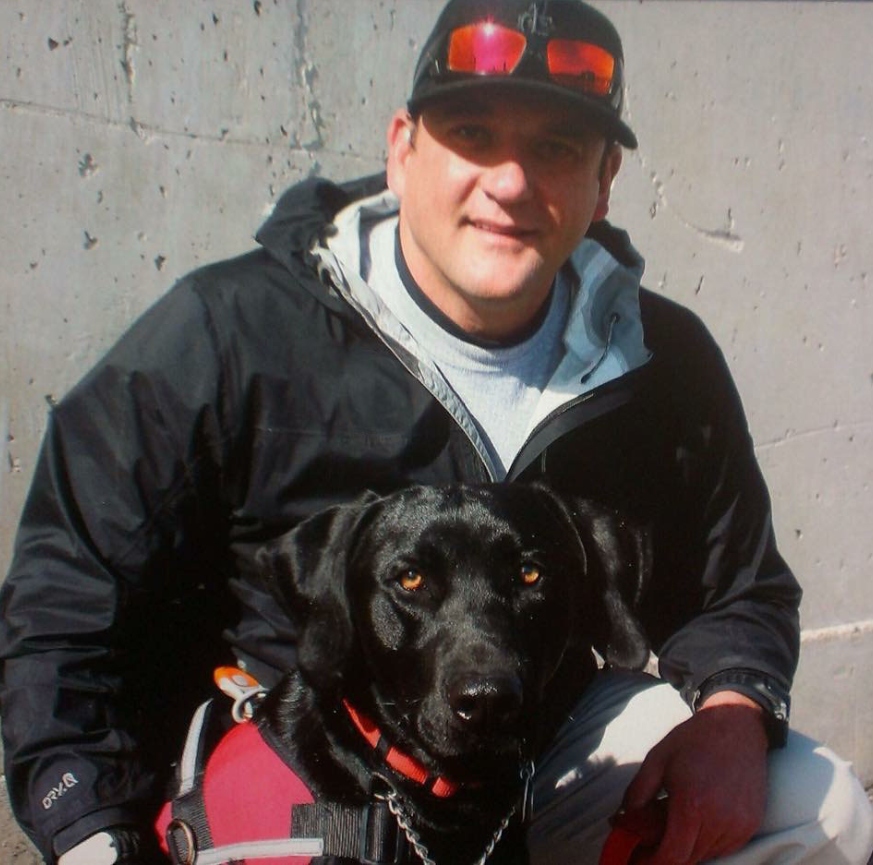
Boots & Paws Deployment — How This Process Works
Utilizing our skills in lost person behavior, crime scene analysis, psychology, psycholinguistic profiling, criminology, forensics, navigation, digital forensics, victimology, and search and recovery, we complete a deep dive into each case prior to setting boots and paws on the ground.
Completing this allows us not only to prepare for deployment but also determine the probability of finding the missing person, when it’s a possible rescue, not a recovery. We scrutinize every piece of information available including but not limited to case files, prior GPS or search data, digital data, satellite maps of the area, and victimology. Sometimes the smallest piece of information, such as whether the person was left or right-handed, can lead to the recovery of the missing person (left-handed people often make left turns when lost while right-handed people tend to go right).
Once our in-depth consultation is complete, a determination regarding deployment is conducted in conjunction with the investigating law enforcement agency. If a boots and paws deployment is deemed necessary, the next phase begins. Fide Canem Cold Case, Inc. is willing and able to deploy to any location to complete a search and recovery mission. No case is too cold, no location too far.
“What defines Search and Recovery success?”
Recovering the missing person is understandably the outcome any search team is seeking when they deploy. However, there are other types of success which may be less apparent. For example, some cases are too dangerous for human or canine search. These cases also include areas where the probability of detection is minuscule, including places like unstable mine shafts and caves. Determining the probability of detection in these cases can help law enforcement prioritize cases where recovery is possible.
Another unconventional type of success is providing canine assistance simply to clear an area. Clearing an area means utilizing canines to determine the missing person is not within the boundaries of a specific area. This allows law enforcement and the Search and Recovery team to shift focus to other areas of interest where the probability of detection of remains could be greater.
However, the greatest success we experience as a team is simply providing our services to and engaging with families of the missing, whether it be consulting on a case, deploying or ultimately recovering a loved one. Families of long-term (what we call “aged”) missing persons cases often feel no one cares. We want to let them know we do, even when our efforts don’t always give them answers.
Like in April 2019, when my fellow cold case canine handler and investigator, Bret Sayer, our canines, Halo and Uintah, and I took the red eye from Utah to New Mexico to search for the partial remains of a mother who was tragically murdered in 1986. You want a glimpse of the crazy life of a cold case investigator, this is it. After working full days at our day jobs — Bret works in security while I’m a Fatality Review Specialist for the state — we met at the airport, landed in New Mexico at 2:00am and then drove six hours to the search location to meet with the Cold Case Foundation.
We had had no sleep and were running on adrenaline. When we got there, we learned the search area was much larger than anticipated and the winds were very strong. We also discovered that the entire center section of the search area had been excavated to provide materials for the construction of a nearby roadway. This required a quick pivot in our search strategy, so Bret and I surveilled the area, quickly redeveloped our search strategy and deployed into the field as quickly as possible.
We searched the area for the remainder of the day and much of the second. While our canines had some alerts in one particular section, nothing materialized. We subsequently learned our canines had found the area where some of her remains had previously been recovered but were unable to recover any additional remains. Before leaving the area though, we met with the daughter of the homicide victim. She had observed the search both days and had provided all the information she had gathered on her mother’s case. Rather than being upset, she told us, “No one has even said my mom’s name for the last 35 years. Now you are all here. You care.” While we may not have been able to recover additional remains, she saw how hard our canines searched and was grateful we were willing to drop everything to assist. Her words moved us, incredibly.
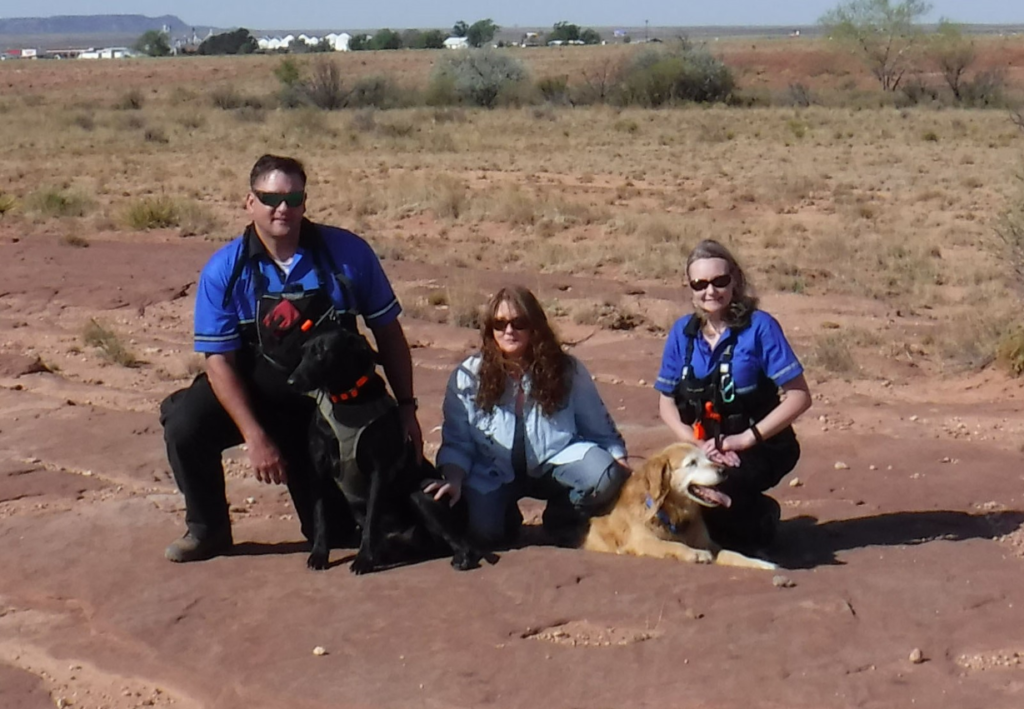
A Long And Winding Road We’ve Chosen
When I first started my canine search and rescue career, my mentor said to me, “If searching was easy, everyone would do it.” I’ve worked on innumerable cases, and it’s difficult, complex work but the precious times we can make a difference are worth all the heartbreak and effort. Uintah, my long-term partner who passed away this past May, had three finds in her career, all recoveries, one on land and two in water. A Golden Retriever, she was my whole world and the reason I became a handler. We were partners for over 14 years.
While I can’t discuss other cases because they are still open, I can say pouring over case files, developing search strategies, deploying for days, and still not recovering remains isn’t easy. But however hard it is on us, it’s much harder on the family living a nightmare.
Our canine teams are certified in wilderness rescue/recovery, urban rescue/recovery, disaster rescue/recovery, avalanche rescue/recovery, and evidence detection, location and recovery. We train in real-world scenarios to ensure success. Training to locate human scent in any form allows us to be prepared for all potential rescue and recovery possibilities. Working with minute sources, we are able to search for and recover even the smallest human remains, often as small as one human tooth.
We train for every possible Search and Recovery scenario, urban to wilderness, avalanche to desert, water to what’s buried. Working with AirMed (the University of Utah’s medical helicopter team), we ensure we can reach remote locations, including those requiring advanced technical and rappelling skills to reach. Our human team members have advanced degrees in criminalistics and forensics and are crime scene certified. Our extensive experience with law enforcement and case consultation allows for detailed case review, consultation, and cadaver dog assistance. We are uniquely qualified to assist with cold cases and critical incidents. In our world, no case is too cold, too far, or too difficult.
Fide Canem — Trust the Dog.
Author Bio: Kacy Robinson got her associate of science degree in Criminal Justice at the College of Eastern Utah and followed it up by certifying as a Crime Scene Analyst from the Utah Bureau of Forensic Services Crime Scene Academy. She also has a BA Communications through the University of Utah and an MS in Computer Forensics from the Henry Lee College of Forensic Science at the University of New Haven. While attending, she was the Lead Archivist on the Robert F. Kennedy Assassination Project. spent twelve years with the oldest and largest search and rescue organization in the state of Utah with her two canine partners, the late Uintah and Wahsatch, both Golden Retrievers.
In 2017, Kacy and search partner Bret Sayer established Fide Canem Cold Case, Inc., the first search and recovery team focused exclusively on cold case missing persons and evidence recovery. Bret is a Salt Lake City native who has worked in public safety and security for 20 years. As security manager for a major corporation, he oversees a team of more than 50 officers. Bret attended Weber State University in Ogden, Utah, with a focus on Criminology, Forensics, Chemistry and Laws of Evidence. He is a K9 Human Remains (Cadaver) Handler in tandem with Halo, his 6-year-old Black Labrador Retriever, and has been a search and rescue K9 handler for 8 years. He was assigned to be the callout coordinator and law enforcement liaison in deploying and activating search and rescue teams. Kacy and Bret can be reached here.